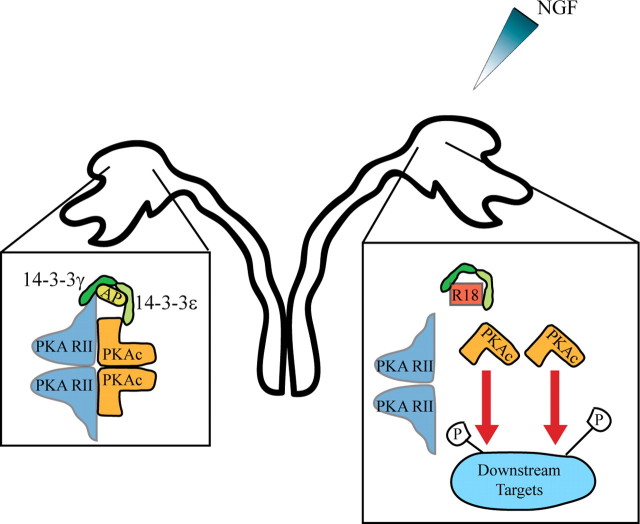Figure 8.
Model for 14-3-3 regulation of PKA in growth cone turning response. In P5 rat DRG growth cones, 14-3-3γ/ε heterodimers (shown in green) bind to PKA directly or through an adaptor protein (AP) and downregulate the activity of the PKA holoenzyme, resulting in a repellant response to a gradient of NGF (left). In the presence of the R18 peptide (red square), 14-3-3 binding is disrupted, leading to a dissociation of the active catalytic subunits of PKA (orange) from the regulatory subunits (blue) and an increase in PKA phosphorylation of downstream targets. This switches the response of the growth cone from repulsion to attraction (right).

